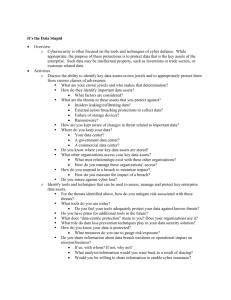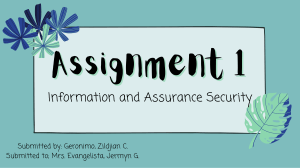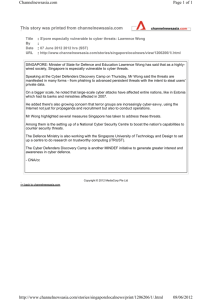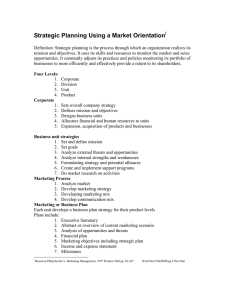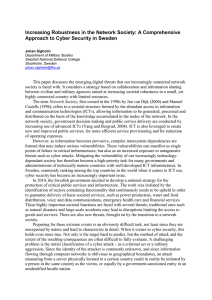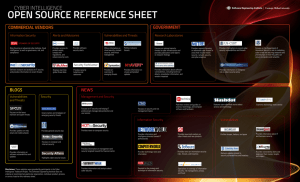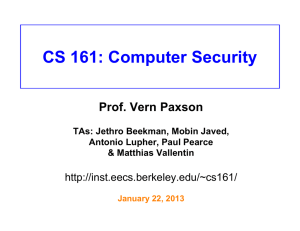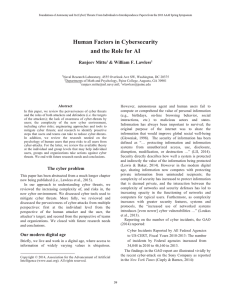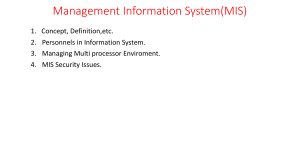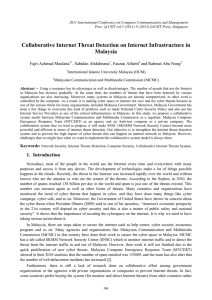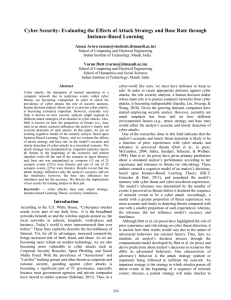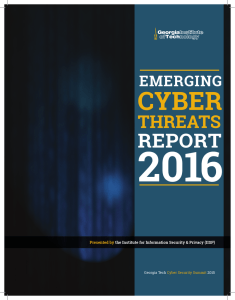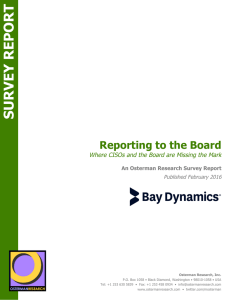What is information security?
advertisement
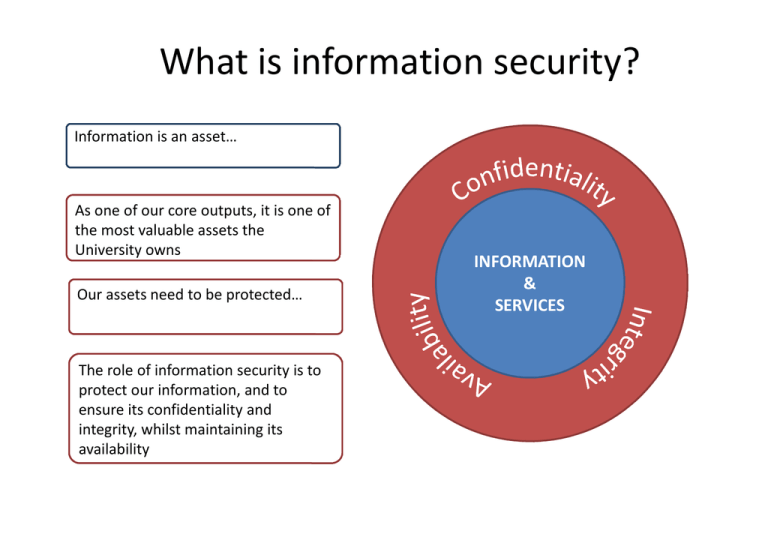
What is information security? Information is an asset… As one of our core outputs, it is one of the most valuable assets the University owns Our assets need to be protected… The role of information security is to protect our information, and to ensure its confidentiality and integrity, whilst maintaining its availability INFORMATION & SERVICES What does ‘Information Security’ cover here? FOI (incl publication scheme) Information Management Data Protection Corporate Records Physical Threats (business continuity, environmental hazards) Malicious attacks Compliance IP and Copyright (cyber threats, espionage, denial of service) Risk Management Key principles of information security Confidentiality • Providing access to information for only those individuals with a valid and authorised reason to do so Integrity • Ensuring that information is not altered/deleted or otherwise tampered with by people unauthorised to do so It’s a fine balancing act! Availability • Ensuring information and other critical assets are available when needed • …it’s a fine balancing act!... These are the bases of data protection legislation and industry standards for information security What are the threats and risks? Reputational Risk Financial Risk Business Continuity Risk Reputational Damage: Compliance (DPA): Disruption to operations: UEA ‘Climategate’ Hack by Anticlimate change activists; near-market or cutting edge research of interest to others for commercial advantage HEIs hacks: Common in US with increasing reports in UK media In 2012, 51 US institutions reported breaches totalling 1,977,412 records; most achieved through password hacking Internal Risks Penalties up to £500k lack of appropriate processes and training has lead to increased fines in recent cases; proposed higher EU penalties on way UK Cyber Security Strategy: National concern of research and IP theft – universities considered part of ‘critical national infrastructure’ Internal compliance: Weaknesses in policy and processes in terms of coverage and enforcement by hactivists, disgruntled individuals, state-sponsored groups; Spamhaus attack ‘slowed the internet down’ and US banks show heavy losses as computers were ‘shut down’ New and emerging technologies (e.g.Cloud services) provide opportunities to ‘goodies’ and ‘baddies’ alike so risks need to be identified to stay ahead of the game Impact of IS Measures on Community: Information Security processes could be seen as constraining or stifling to a community which is used to open systems and access What do these threats and risks apply to? The short answer….everything! Type of Information Medium • Personal info – identifying living individuals • Sensitive info – identifying specifics on individuals – medical, religion, financial details etc. • Commercial information – strategic planning, ‘trade secrets’ • Research info – may include any of the above, plus intellectual property • Our information and that of our partners (info entrusted to us for a specific purpose) • The medium doesn’t matter… It can be… • Paper • Electronic data … XLS, Word, PPT, any type of file or program • On any kind of media, using any kind of storage … CDs, DVDs, hard drives, flash drives, paper, stored on your desk, in your drawer, in filing cabinets, waiting to be shredded. The list is endless!... Core Risks to UoW information • • • • • • Theft (physical or cyber) Accidental loss Loss of access Inappropriate disclosure Loss of privacy Loss of accuracy in information • Damage to information • Fraud • Espionage (physical or cyber) Could the threats and risks happen here? Yes because… We have a huge community - with 30+ departments, over 5k staff and over 22k students, that’s a lot of people generating information, and information about a lot of people to manage We have sensitive and highly sought after research (Clinical Trials, WMG) and high profile partnerships (JLR, TATA); we have a perceived lower level of commercial confidentiality because of our public benefit position We have a greater need to share and collaborate with partners than other businesses so our systems and community are deliberately open We have a reputation for open systems and collaboration with all sorts of organisations; we are an attractive target as a gateway to these organisations –malicious parties may not be interested in our assets but may be interested in using our infrastructure to gain access or cause disruption to those we work with We have a reputation for academic excellence and innovation. We have a strategic vision to be in the global Top 50. We need to ensure info security risks don’t jeopardise our goals as recognised in the University Risk Register UoW Information Security Roles Who is responsible for what Governance Team Legal Services Develop and promote policy (approval IPSC) Ensure compliance with the Data Protection Act Provide guidance and training Monitor compliance Manage Freedom of Information IT Services Provide technical implementation of policy (e.g. anti virus) Incident response (when IT breaches occur) Manage copyright Provide technical expert advice DP Incident response and facilitates remedial action or reporting Provides metrics of incidents and sector comparison The community HoDs – implement policy at local level and responsible for local compliance Individuals – enact best practice and report real/potential incidents It’s everyone’s responsibility!
